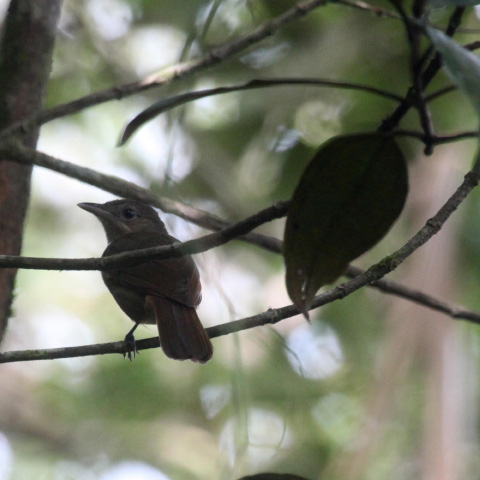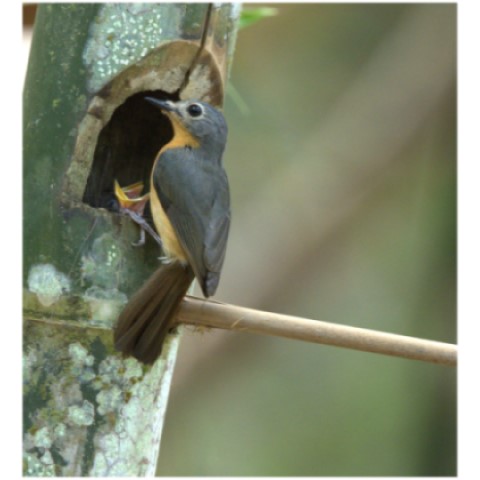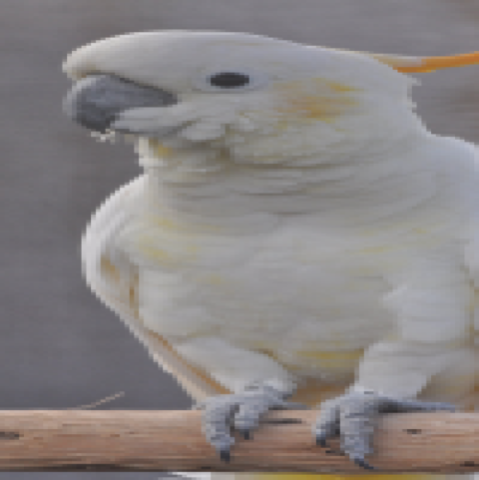Conservation Actions
Conservation Actions UnderwaySearches in 2004, 2006 and 2007 successfully rediscovered the species. A long-term engagement project is underway (see Indrawan et al. 2014). A team of local residents are now leading an awareness campaign and promoting the adoption of sustainable agriculture, while hunting of the crow has apparently ceased (M. Indrawan in litt. 2007, 2008). Discussions have taken place with local governments over planned forest protection initiatives (M. Indrawan in litt. 2007, 2008). Conservation Actions Proposed
Continue to search for the species throughout the archipelago (paying close attention to the use of vocalisations to aid detection) to improve knowledge of its range, distribution, population status, habitat requirements and potential threats. Identify its conservation needs based on results of surveys, and thereby work towards the establishment of appropriately sized and situated protected areas, through community-based forest protection (Indrawan et al. 2010), that support viable populations of this and other threatened species known to occur on the islands. Closely monitor potential mining activity and begin dialogue with mining companies where appropriate. Continue to work with local communities to promote the conservation of this species, concentrating at first on farmers and hunters (Indrawan et al. 2010). On Peleng, monitor C. enca as a potential competitor (Indrawan et al. 2010). Involve local people in research efforts, including studies into the species's diet in order to establish that it is not an egg predator (Indrawan et al. 2010). Encourage sensitive ecotourism that incorporates volunteer work or other contributions to local stakeholders (Indrawan et al. 2010). Support local communities to outline the indigenous territories under forest cover, and aid in forest regeneration (M. Indrawan in litt. 2016). Attempt to limit the impact of tourism on the region (M. Indrawan in litt. 2016).
Location Information
Corvus unicolor was previously known from two specimens taken on an unspecified island in the Banggai archipelago, immediately east of Sulawesi, Indonesia. A sighting of the species on the western slopes of Peleng in 1991 remained unconfirmed until searches of the island in 2004, 2006 and 2007 confirmed this species survives, although only in forest on the mountain slopes of western Peleng and in small numbers at lower levels in the central isthmus of the island (del Hoyo et al. 2009; Indrawan et al. 2010). Sound recordings were made and two specimens were taken (M. Indrawan in litt. 2007, 2008; Masala et al. 2008). It is thought unlikely that the species is extant on Banggai Island, with only Slender-billed Crows Corvus enca encountered during a 3-day visit in 2005 and an apparent lack of sufficient habitat for C. unicolor (King 2009). Local hunters on Peleng estimate densities of up to 50 birds in a 3- to 4-km radius, thus very rough estimates suggest a global population of up to 500 individuals, with 50-200 birds in the western Peleng Mountains. The montane forests of Buko and Bulagi districts are thought to be the remaining strongholds (M. Indrawan in litt. 2007, 2008; del Hoyo et al. 2009). Interviews with local people strongly suggest that the species is present in mountains in the far west of Peleng, although this region is heavily deforested and it is unlikely to be abundant there (Indrawan et al. 2010).Geographic Range
Extant
Indonesia
Population Information
The species's total population has been estimated at close to 500 individuals, including 50-200 birds in the western Peleng Mountains. Given uncertainty over its population densities and the lack of surveys to confirm its presence in some areas suspected to be occupied by the species, coupled with its tendency to travel in family groups, the number of mature individuals is precautionarily estimated to fall into the band 50-249.Threats
Habitat destruction remains the greatest threat for this rediscovered species. In the past it may have been severely impacted by extensive deforestation, as by 1991 logging had begun in the last remaining areas of primary habitat, which probably led to further encroachment by shifting cultivators as a result of improved access. C. enca appears to have become dominant in more disturbed habitats and may be a competitor (Indrawan et al. 2010). Exploration by mining companies was considered to be a serious potential threat (M. Indrawan in litt. 2007, 2008). However, this has been averted for now due to advocacy work, but it could potential re-emerge as a threat in the future (M. Indrawan in litt. 2016). Although subsistence hunting occurs on Peleng, the species is not sought-after by hunters (Indrawan et al. 2010). The perception by some farmers that the species takes poultry eggs is probably unfounded (Indrawan et al. 2010), but may result in some persecution. Other potential threats are development of tourism and the conversion of of habitat to palm oil plantations, although the latter has been halted by advocacy work (M. Indrawan in litt. 2016).IUCN Red List Account Link
Please click here to see the species' IUCN Red List Account page.Photo Credits
Filip Verbelen (category and featured image)





